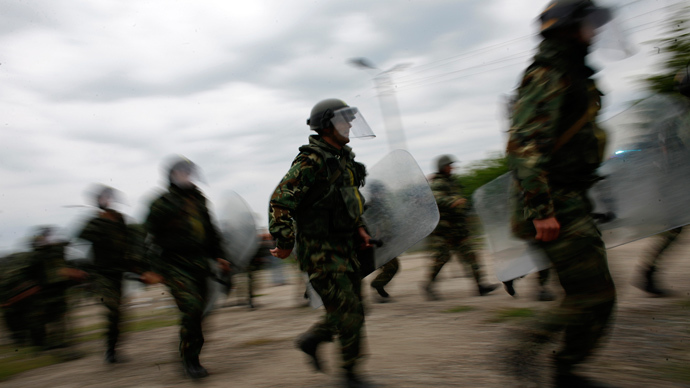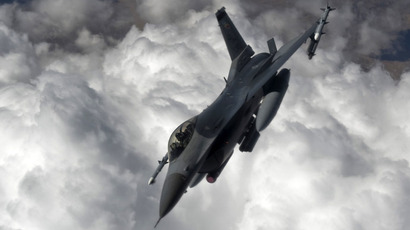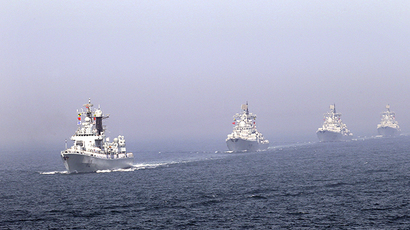6,000 NATO troops hold one of largest post-Cold War drills near Russia's borders

Poland and the Baltic states are hosting the largest strategic war games the defense alliance has held in ten years. The NATO Response Force will practice defending the Baltics from an unidentified foreign invader.
The ‘Steadfast Jazz’ exercise, launching on Saturday, gathers
some 6,000 troops from all NATO members as well as non-member
states - Finland, Sweden and Ukraine. Around half of them will
participate in live exercise training, which will involve dozens
of armor, aircraft and naval vehicles. The other half of the
personnel are headquarters staff, who will take part in command
and control drills.
The week-long war games are designed “to make sure that our
rapid-reaction force, the NATO Response Force (NRF), is ready to
defend any ally, deploy anywhere and deal with any threat,”
said NATO Secretary General Anders Fogh Rasmussen.
Eastern European members of NATO have been seeking to host
large-scale alliance drills for years, and ‘Steadfast Jazz’ is
the largest since 2006. The scenario of the games involve an
unidentified foreign nation invading Estonia over a territorial
dispute, and the alliance deploying its rapid-response force to
fend off the aggressor.
While the name of the invading force is not stated, geography and
global politics leave little doubt. For several years there was a
rising concern in the three Baltic states over a perceived threat
from Russia, which, according to some alarmists, could move its
troops and occupy the region, which used to be part of the Soviet
Union, in a matter of days or even hours. The big drill is
partially meant to reassure the weary NATO members that the
alliance is ready to protect them.
"Russia as a country in the last five years has been
increasing its assertiveness in the Baltic," Latvian defense
minister, Artis Pabriks, told Reuters. "'Steadfast Jazz' is
important to us as these are the first exercises where we really
train to defend our territory."
The latest peak of concern in the Baltic came in September during
the Zapad annual joint military exercise held by Russia and
Belarus. Prior to the drill, some media in the Baltics claimed
that they were training for a potential invasion.
Russia and NATO, partners in some areas like counter-terrorism,
have their unresolved disputes. Arguably the most painful is the
alliance’s plan to deploy an American anti-ballistic missile
system in Eastern Europe. Moscow sees the plan as a threat to its
national security, since it may undermine Russia’s nuclear
deterrence.
Despite years of effort to find a compromise, Russia’s concerns
over the ABM shield have not been addressed. In the latest
anti-missile move, the US and Romania this week have begun
revamping a military base in the eastern European country, which
will host some elements of the system.
Russia’s latest military build-up move is the planned deployment
of additional S-300 air defense batteries in Belarus. The two
countries have joint integrated strategic air defense system
guarding their borders.
The tension, however, is far from the antagonism of the Cold War.
NATO representatives attended the Zapad drill, while Russia sent
its observers for the ‘Steadfast Jazz’ exercise.














